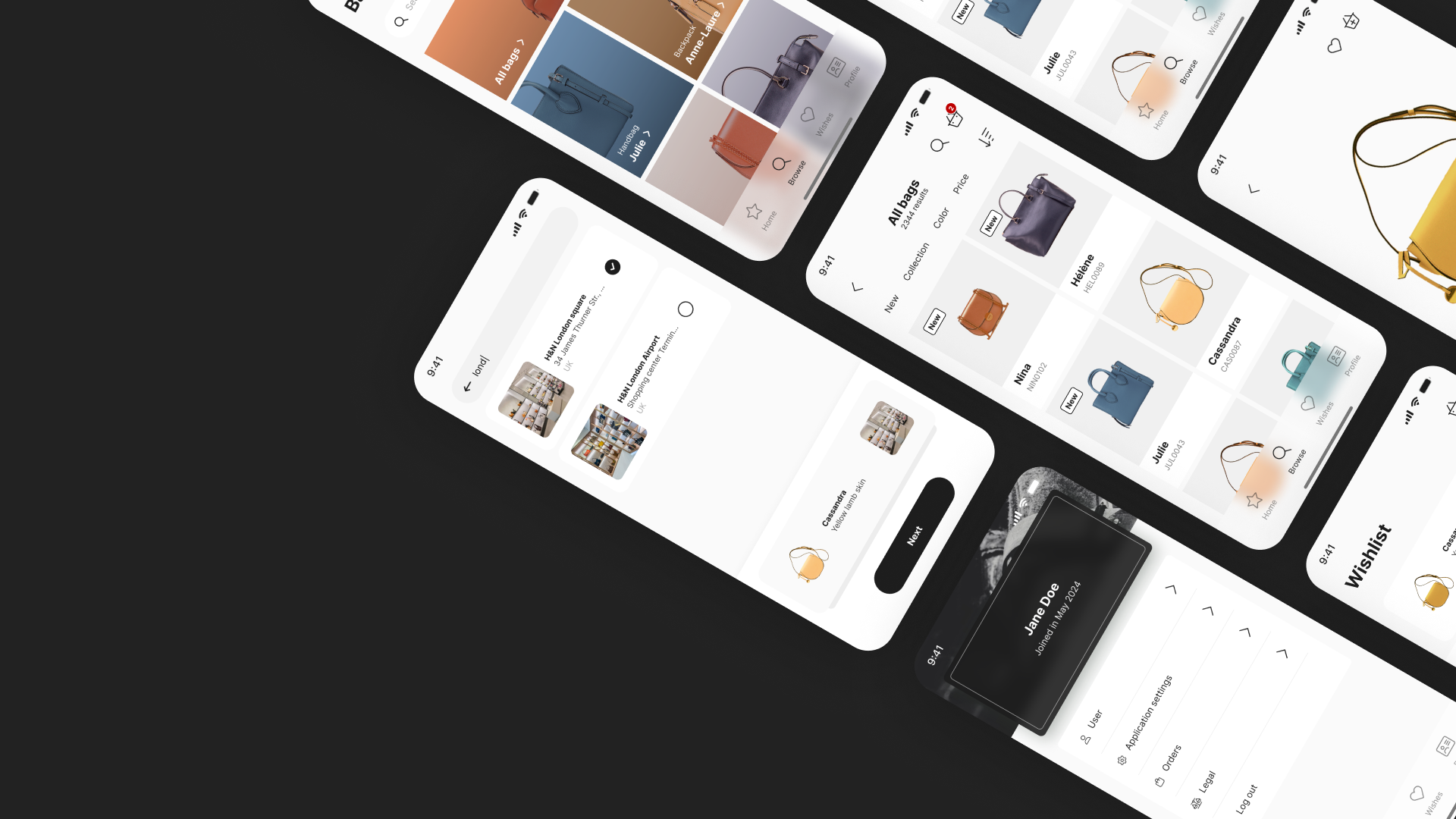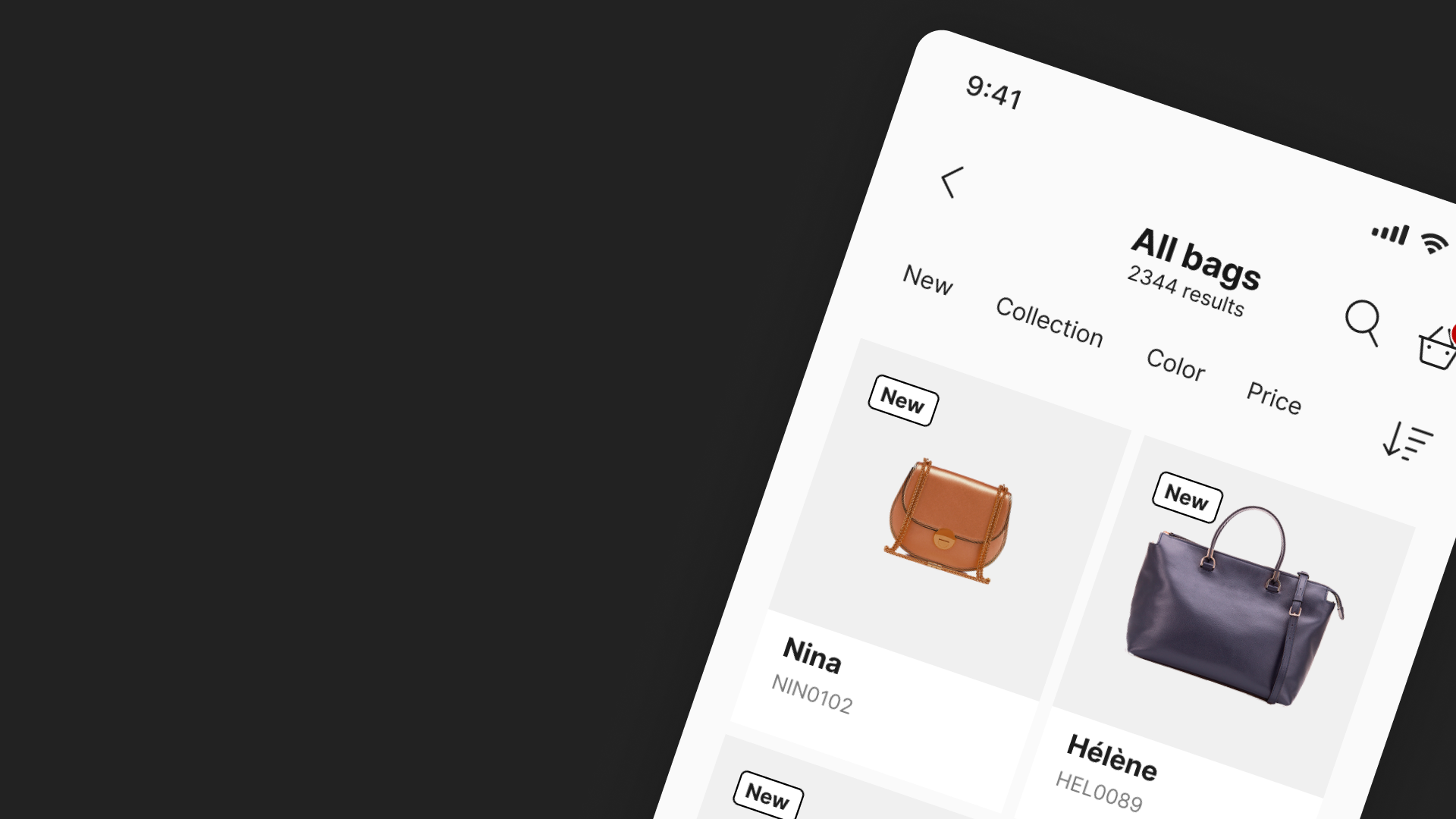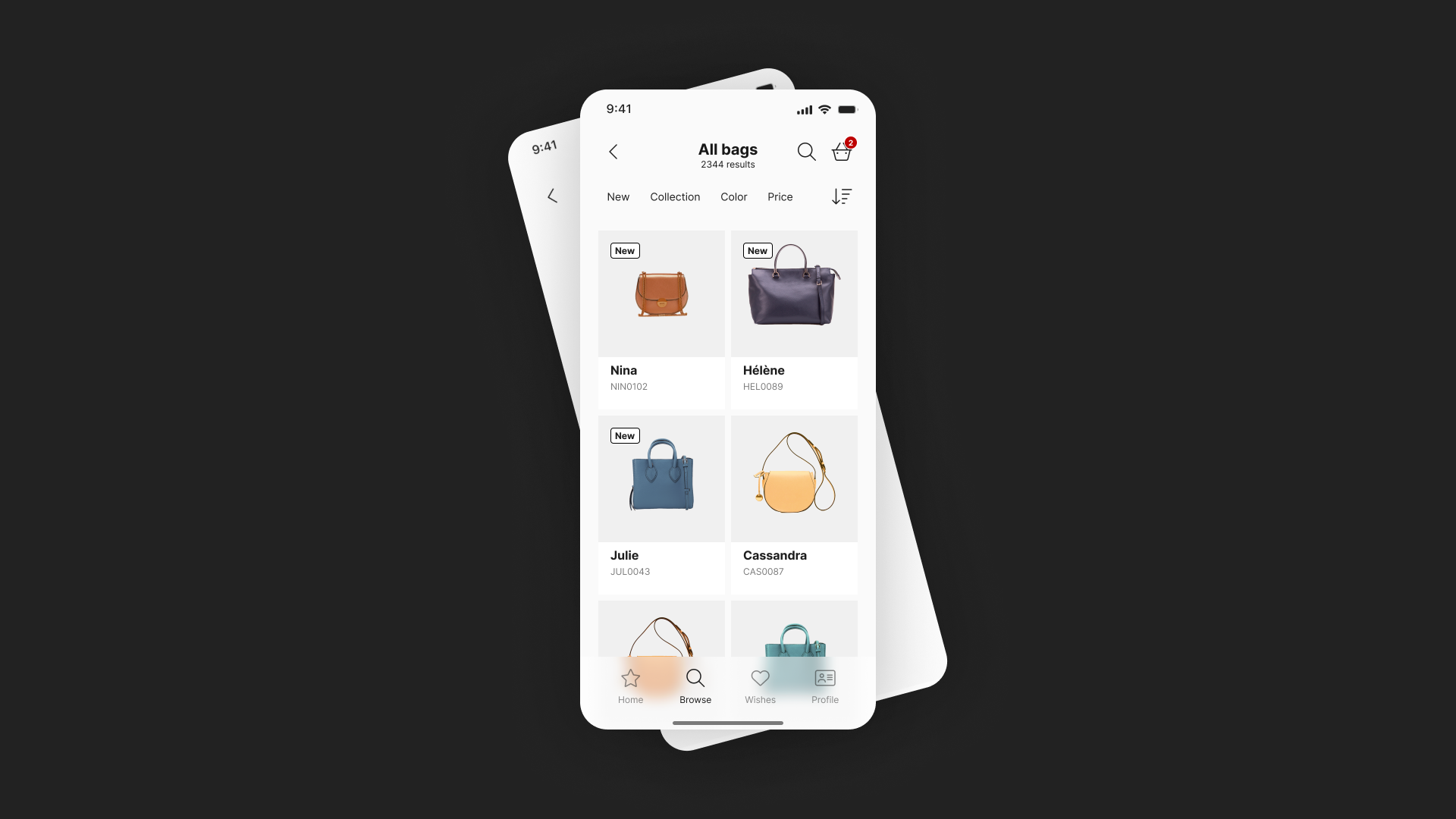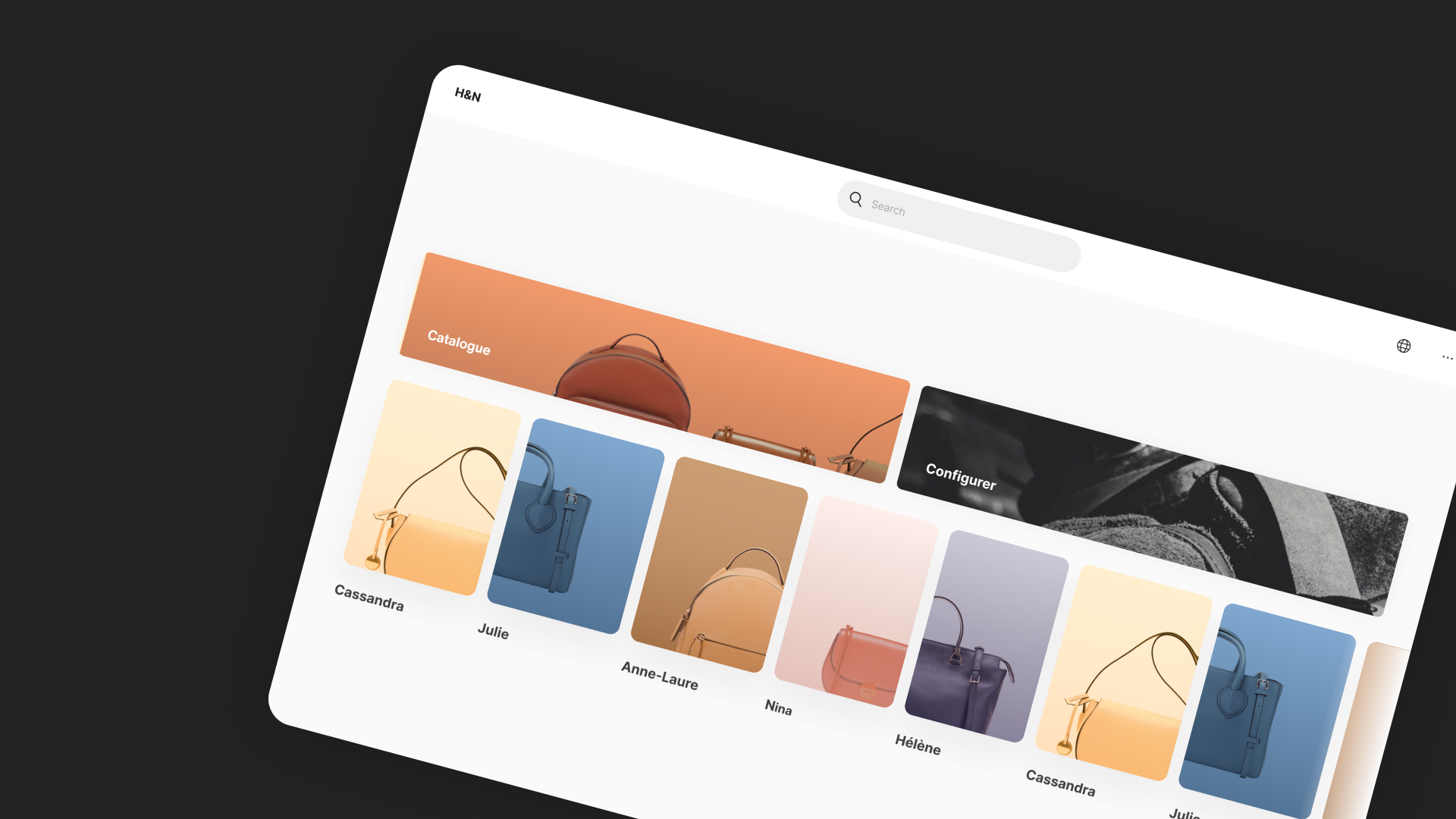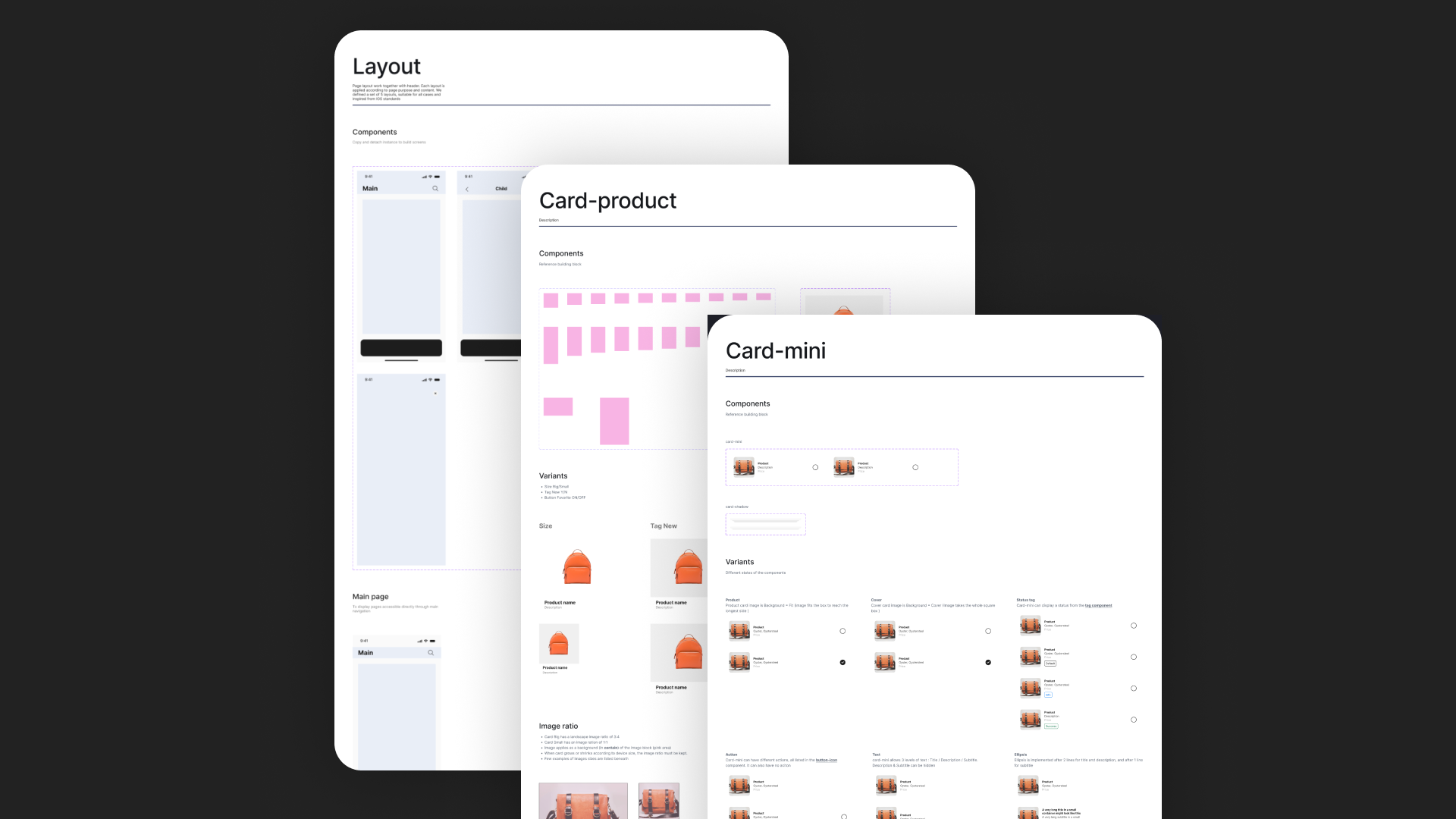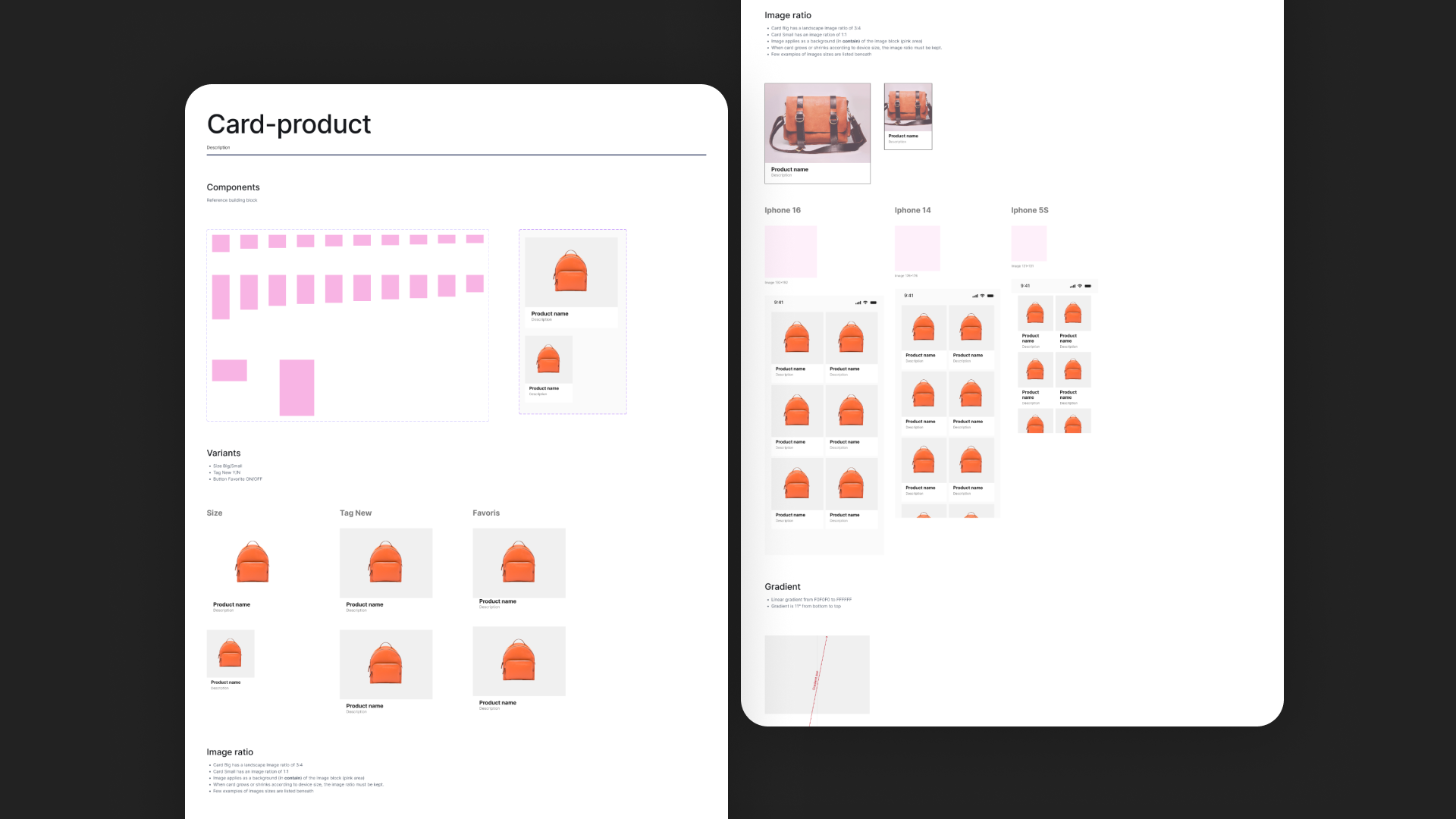Rethinking a product catalogue for a luxury brand
In luxury industry, a product catalogue is a digital gateway to brand experience. In my latest project, I could support the reshaping the product catalog for a renowned luxury brand [for privacy reason, both applications have been rebranded]. The product catalogue serves as a base for two distinct applications: a mobile application for customers to explore, save favorites and track orders, and an iPad application tailored for staff, to enhance in-store experience.
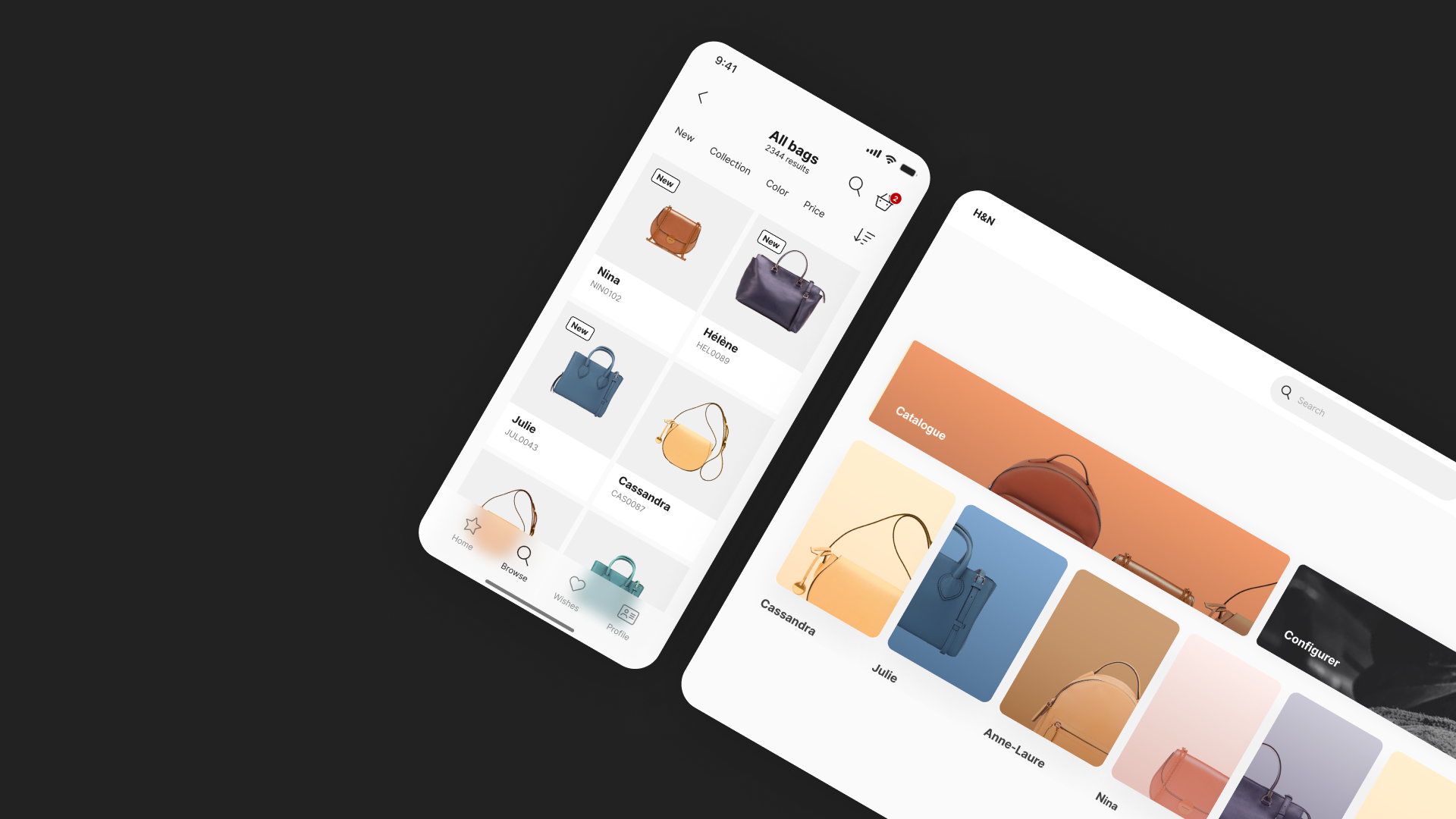
Design challenges
Designing a product catalogue generally presents the main challenge of the search and results accuracy. Additionaly, this set of solution aimed at satifying both B2B and B2C needs in terms of search pattern; while staff needed an exceptionally efficient search to quickly pinpoint exact results, both application needed to facilitate customers’ exploratory and discovery-driven browsing.
Promoting luxury’s exclusivity while matching standardsThe catalog needed to convey brand’s sophistication and prestige, using premium visuals and refined interactions. At the same time, it was crucial to ensure the design met usability and accessibility requirements, making the experience inclusive without diluting the exclusivity that defines a luxury brand. Balancing these priorities demanded a deep understanding of both luxury branding, platforms’ guidelines and usability heuristics
Accessing users in a confidential environnementGathering user insights was crucial to ensure the design met the needs of customers , yet the restrictions due to the confidential nature of the project required creative approaches to user research, and emphasis on non-user related research.
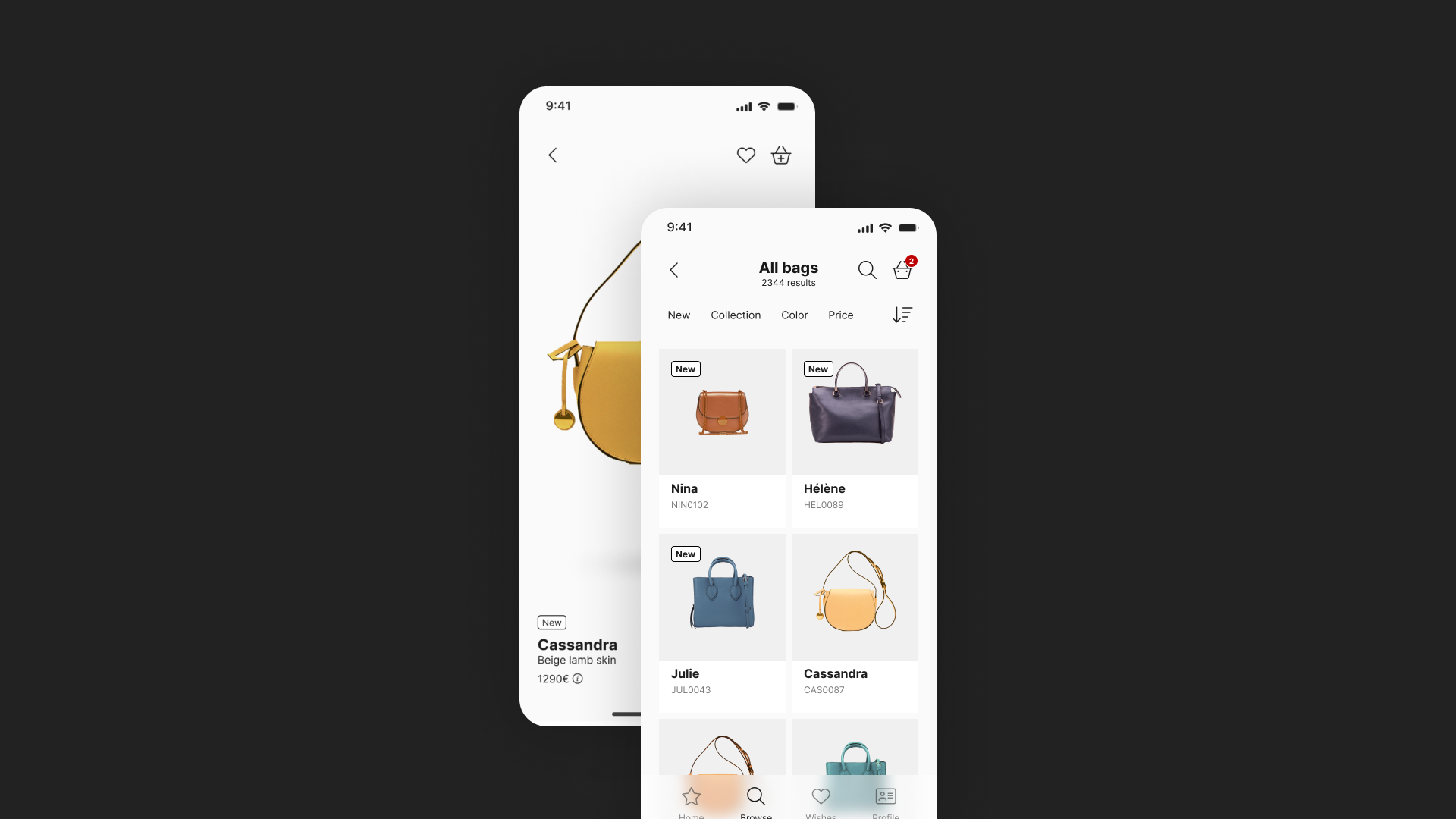
Optimizing search and discovery for diverse user needs
On the Ipad application, staff requires an efficient and effective access to products. They might use the search for 3 use cases :
- Find an specific product; they expect one and only result.
- Find a set of product, for comparaison. They expect to find only the products matching the search criterias, and need to find all products matching these criterias.
- Ensure a specific product does not exist; they expect no results.
For the search features, we implemented ElasticSearch and conducted extensive research on best practices to ensure staff could find precise and exhaustive results.
On the other hand, the customer mobile application and the use case of the Ipad app as a client-facing support had to support an exploratory and drill-down search pattern. For the customer and shop apps, we fostered exploratory browsing by integrating a configurator tool, organizing collections clearly, and placing a strong emphasis on immersive product pages to engage users.
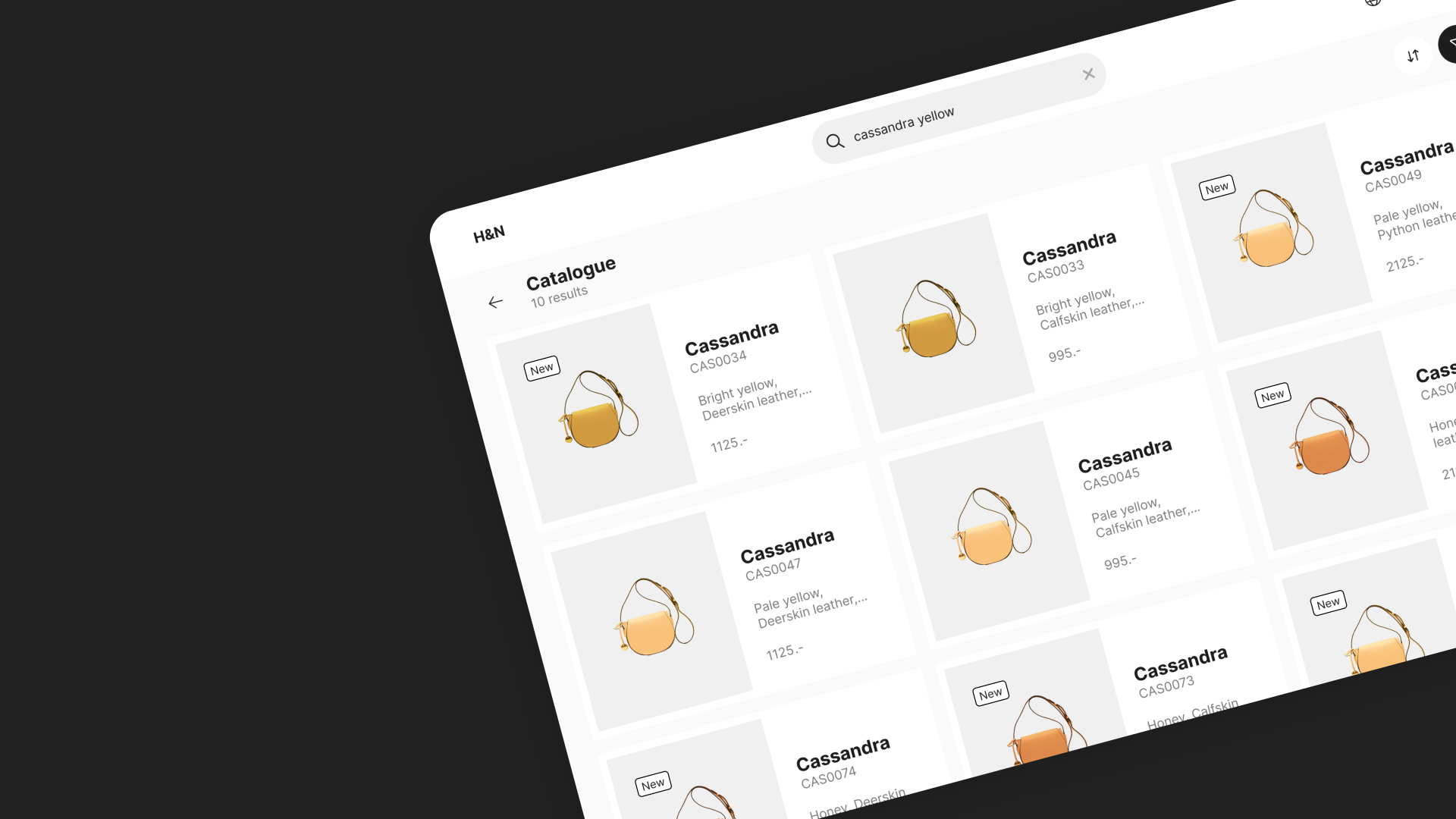
Promoting luxury’s exclusivity while matching standards
For the mobile application, we started based on a previous work made within our client’s team. The initial application strongly adhered to the brand's identity, it’s essence and atmosphere. Yet, its navigation patterns and layouts diverged in some point from usability standards and platform guidelines for both iOS and Android.
To improve the application, we completed a heuristic evalution based on Nielsen & Norman group’s 10 heuristics, and backed it up with a review of IOS recommendation toward navigation pattern and page layouts. This research helped us to specify our own set of rules for page layout and navigation pattern, and keep it consistant within the entire application.
To get a better understanding on the luxury industry, we conducted a benchmark on a set of mobile applications. We discovered an emerging trend: reducing branding to its minimum, to allow products to shine. Inspired by this approach, we re-evaluated the app's branding intensity and proposed improvements in the results page to offer a better product overview.
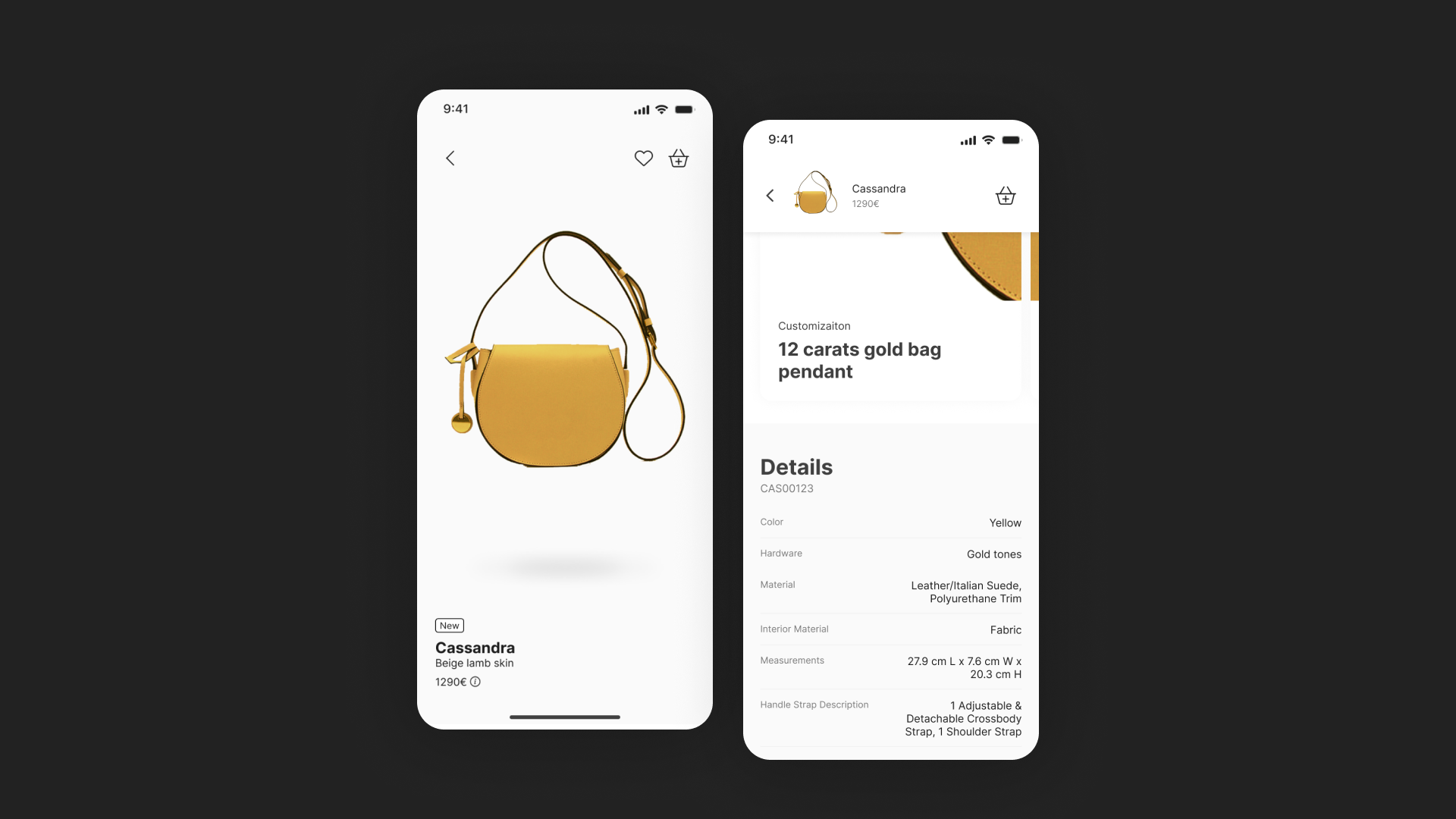
Accessing users in a confidential environnement
When working as external provider, we often find it difficult to access to end users. This specific project wasn’t different for 2 reasons : A - the brand is not directly in contact with customers, because products are sold mainly through independent retailers and B - the project itself was confidential.
To overcome this issue, and in agreement with the client, we conducted a round of "friend and familly" usability test, in-person, selecting carefully amoung our close colleagues the ones showing a clear interest for the brand. We discover that 2 out of the 6 participants where already proven customers.
We managed to gain a lot of information from the screening interview, and highlighted mainy insights very usefull for the upcoming development. The users praised the app's atmosphere and brand image, as well as the result page and browsing. The test highlighted few issues on the ordering and tracking process, filling out the backlog for the next few weeks.
